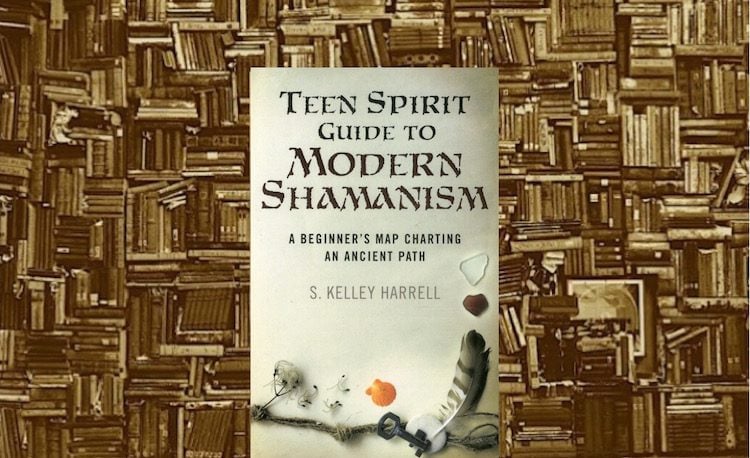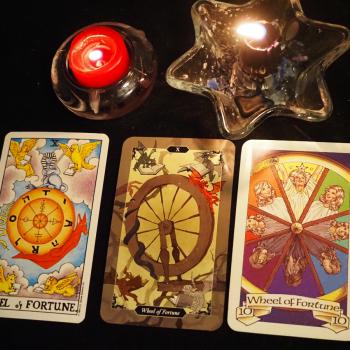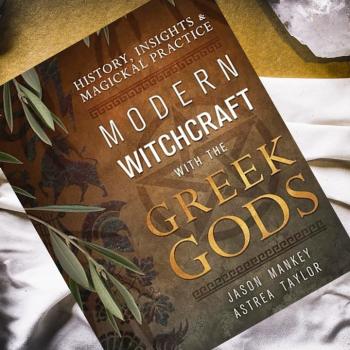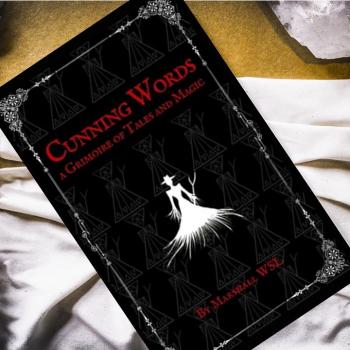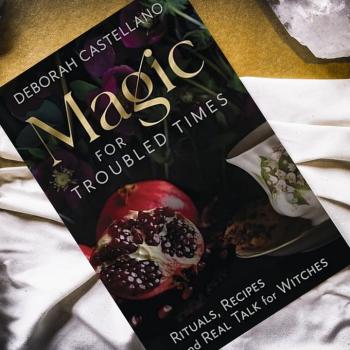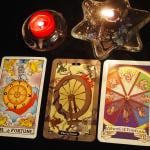I started Teen Spirit Guide to Modern Shamanism (S. Kelley Harrell, Soul Rocks Books) with some personal curiosity, because I was drawn to spirits as a child and studied ever-so-fleetingly with a shaman in my late teens. Author S. Kelley Harrel does a very good job of laying out the basic concepts of shamanism, no easy feat considering the number of cultures from which shamamic paths have emerged. Her first task is to explain cosmology, the framework or map that a shaman uses in order to navigate the worlds of spirit, and why one’s particular cosmology isn’t nearly as important as using the same one consistently.
As a basic overview to get this 40-something reviewer started on his studies of shamanism, this is an excellent book. The author lays out the concepts in a series of chapters that each end with questions and exercises for the reader. While she cautions against proceeding without a companion at the least and preferably a teacher, if the book is followed in order, someone could become familiar with a number of techniques. With a few years under my belt, I’m able to read with more discernment than when I was young and more excitable. Undistracted by the urge my younger self had to aggressively question any new information before experiencing it firsthand, I learned quite a lot about shamanism, enough to realize I’ve been dabbling untrained for a long time.
Harrell’s discussion of cosmology particularly stands out in my mind, for she was succinct in explaining that while the need for a map of these unseen worlds — the cosmology — is great, it’s not necessary for one cosmology to agree with any other. It’s a lesson that many of us who follow Pagan theological debates online could stand to remember.
Quirks: writing a book on shamanism without addressing cultural strip-mining (a term coined by Byron Ballard) would be tone-deaf. Harrell jumps right in, but as a European-American guy I’m not entirely sure if it’s enough or not. The concept of “core shamanism” is brought up, as well as reactions to the notion that shamanism could ever be “cultureless.” Harrell also points out some specific examples of what appropriation might look like, such as noting that “a racist notion found in neoshamanic circles is placing high value on indigenous wisdom but not on indigenous people.” It appears that the author takes pains to recognize that these are practices implicit to specific cultures, yet here we have a book detailing how to apply many of those techniques outside of those cultures. Does that make it okay? I don’t think it’s my place to say. The line between appropriation and borrowing is often blurry, and it’s probably not up to the borrower to make that call, at least not without guidance.
Quibbles: what’s almost entirely missing from this book is any real sense that it’s intended for teens. Yes, there are questions which remind the reader of a textbook, but it’s otherwise written at a high level, and largely ignores the way teens think, or their particular concerns. Here’s a typical sentence: “Until recent emphasis on ecodynamics entered contemporary pagan consciousness, modern shamanism largely has been presented and implemented as a personal exercise in spiritual growth, self-healing.” While it’s not appropriate to condescend to teenagers, placing the information into the context of their lives was something I was expecting, and didn’t get at all. Early on in the book is a strong recommendation to obtain a teacher, but any hint that a teen could need parental permission to do so is buried far in the back, in a section about talking to one’s parents. It feels like this was added to an otherwise strong introductory guide to shamanism, just as a way to market it to teens.
There are some stylistic choices I found made the reading harder, as well. The book uses endnotes rather than footnotes, creating the need to flip back and forth to find the reference. There’s also no table of contents, which made it harder to refer back to memorable sections.
Again, this book is technically spot-on and certainly could be helpful. Whether it’s actually a teen guide, and if it’s okay to refer to the practices as “shamanism,” are less clear.


